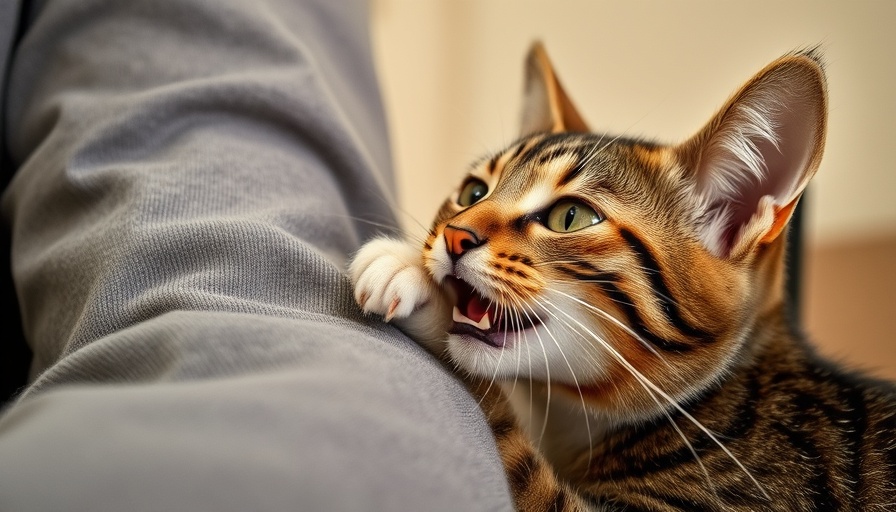
Understanding How Cats Perceive Our Actions
Have you ever scolded your cat only to find them darting away in confusion? Most pet parents have experienced this frustration, thinking that perhaps their feline friend understands the reprimand. However, it's crucial to recognize that cats perceive our actions differently than we would like to believe. When we raise our voices or try to correct a cat, they often interpret those actions as frightening or threatening rather than informative.
In HOW TO SCOLD A CAT CORRECTLY, the discussion dives into the nuances of cat behavior and training, exploring key insights that sparked deeper analysis on our end.
Choosing Calm over Chaos: The Importance of Tone
A critical element in training your cat is the tone of voice you use during scolding. Yelling not only escalates the situation but also undermines your attempt to communicate effectively. Cats respond best to a calm and firm tone that delivers a message of reassurance rather than fear. Instead of shouting, try using a quiet yet assertive phrase like “no” or “aha.” This way, your cat can connect the sound to the behavior without becoming anxious.
Redirecting Behaviors with Kindness
When training our furry friends, it’s not just about stopping undesired actions; it’s fundamentally about teaching them what to do instead. Suppose you see your cat scratching at the couch. Your instinct may be to scold them, but instead, gently picking them up and placing them by their scratching post can yield better results. This consistent redirection not only guides your cat's behavior but also builds confidence and trust between you.
Building a Trustful Environment
Cats are creatures of habit and thrive in environments where they feel safe and secure. To foster this trust, avoid using any form of aversive method, such as spray bottles or shouting. These techniques may result in immediate compliance but deteriorate the bond between you and your pet. Instead, create a nurturing space that allows your cat to explore their instincts without fear. Utilizing positive reinforcement can significantly impact your cat's learning process.
Communicating through Consistency
Consistency is vital not just in commands but in your emotional responses as well. If you frequently change your approach—even subtly—your cat may become confused about what they are being corrected for. Establish clear cues for certain behaviors across everyone in your household. For example, use the same command each time you want your cat to stop climbing on counters. Consistent language paired with supportive energy can set the stage for a shared understanding between you and your furry companion.
Fostering a Healthy Human-Cat Bond
Ultimately, the goal of properly scolding your cat isn’t merely about stopping negative behaviors; it’s about nurturing a relationship founded on mutual trust and respect. Cats need guidance that they can understand, and that requires patience, consistency, and a gentle touch. As their human counterparts, the responsibility lies with us to meet them halfway, speaking their language through calm tones, gentle corrections, and by establishing a consistent environment that reinforces good behavior.
So the next time your beloved cat nudges your laptop off the table or insists on clawing your favorite chair, take a deep breath. Remember that they are not acting out of spite; instead, they are simply being cats. Apply these kinder approaches, full of understanding and patience, to foster a stronger, loving bond that makes for a happy and harmonious home.
 Add Row
Add Row  Add
Add 




Write A Comment